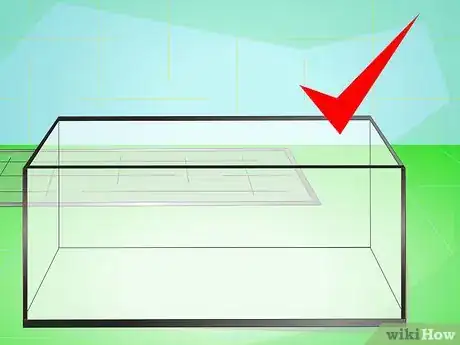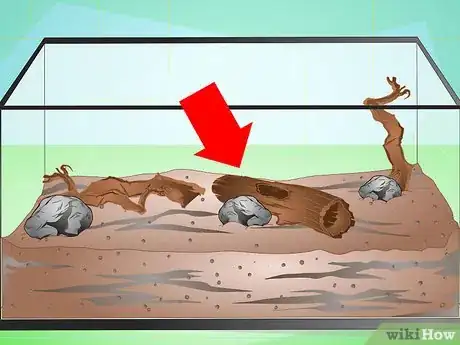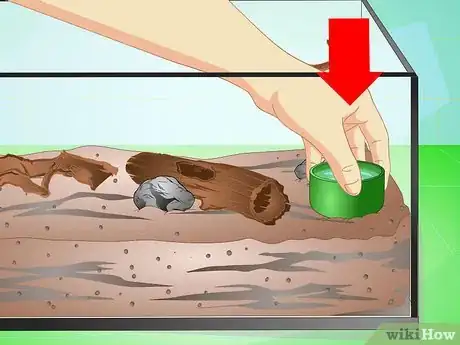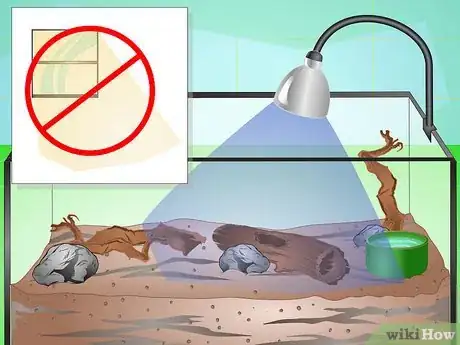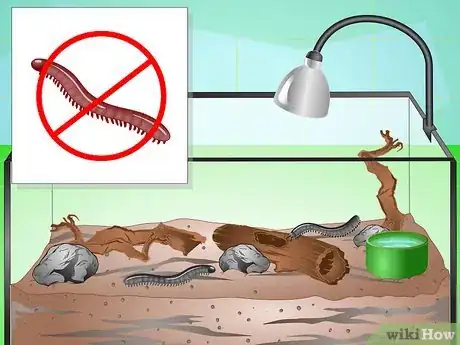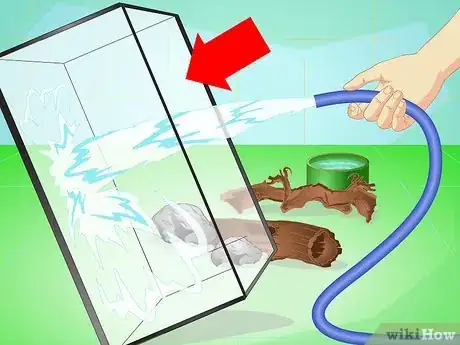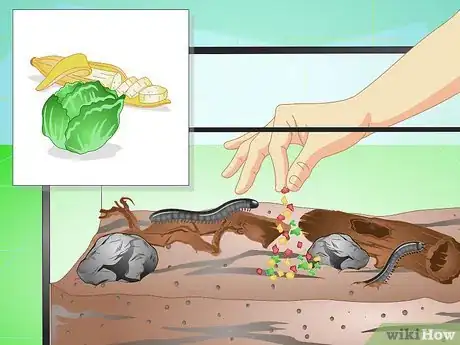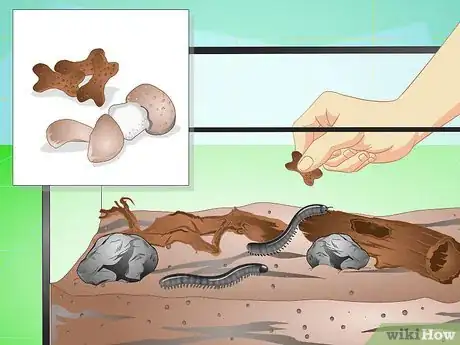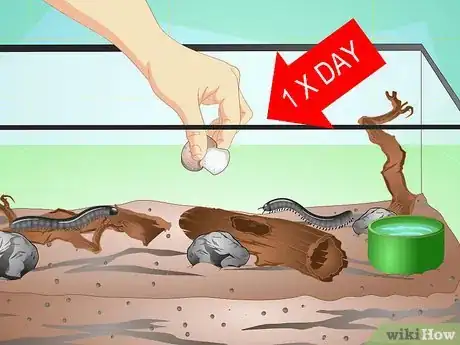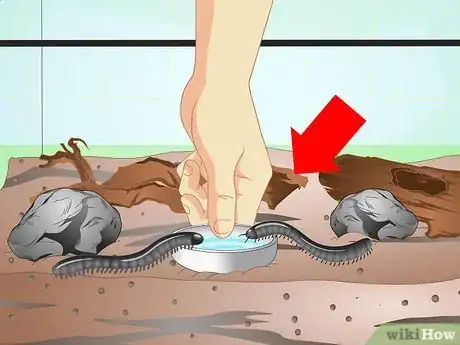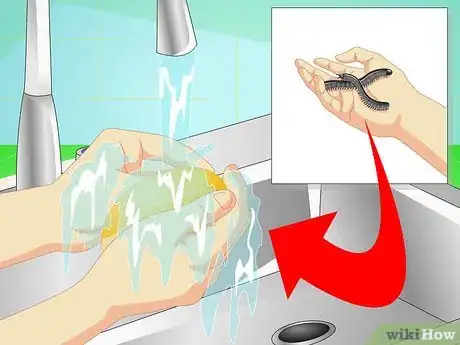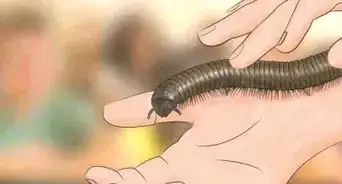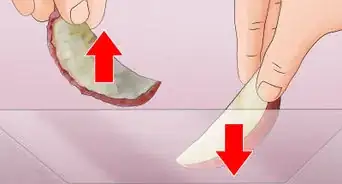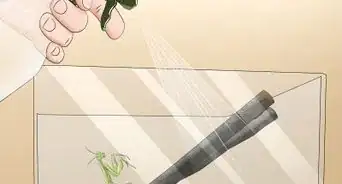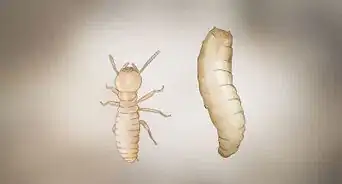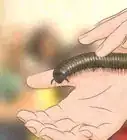This article was co-authored by wikiHow Staff. Our trained team of editors and researchers validate articles for accuracy and comprehensiveness. wikiHow's Content Management Team carefully monitors the work from our editorial staff to ensure that each article is backed by trusted research and meets our high quality standards.
wikiHow marks an article as reader-approved once it receives enough positive feedback. In this case, 88% of readers who voted found the article helpful, earning it our reader-approved status.
This article has been viewed 45,460 times.
Learn more...
The millipede is a long and narrow invertebrate that you can find living under rocks and in decaying logs in all parts of the globe. The millipede is from the same biological family as the centipede, but the millipede has more legs. The typical millipede has a segmented body with a total of between 80 and 400 legs--not 1,000 as the name indicates. A millipede’s normal habitat contains moist soil under a layer of decaying leaf litter or mulch. However, there are ways to make an artificial habitat.[1] [2]
Steps
Creating the Habitat
-
1Select the right size container. A glass or Plexiglas aquarium is ideal for housing millipedes. You can find one of these in a pet store. Such a tank will allow you to easily observe the millipedes and control the lighting. Plexiglas (hardened transparent plastic) will be lighter in weight, so this may be the best choice if you plan to take your millipedes along with you now and then. Get an aquarium in the 5 to 10 gallon range.[3]
- You should also get a metal mesh screen lid to put on top of your millipede’s enclosure. Make sure that you can secure the lid so that your millipedes will not escape.
- Wider cages are better for observing your millipedes than taller ones because millipedes spend at least as much time hiding as they do climbing.
-
2Add substrate material. Substrate is a mulch-type material. You can buy substrate commercially, but it is composed of natural materials. Add substrate composed of damp sphagnum moss and bark to your millipede’s habitat.[4]
- You can put substrate material along the bottom of the tank.
- Layer the substrate as deep in the tank as your millipede(s) are long. If you have more than one millipede, then use the longest millipede as your guide.
- Don’t use gravel or artificial turf in substrate. They are too harsh for the millipedes.
Advertisement -
3Place a hideaway in the tank. Millipedes will climb along any surface provided in the tank. These creatures also prefer secluded spots out of direct light exposure. Hideaways are good additions that satisfy both of these instincts in millipedes.[5]
- Try placing some tree bark, half a coconut, a small pile of rocks, or some old wood in your millipede’s habitat.
- Some pet stores also sell habitats for insect pets or small sections of hollowed out log to lay in the middle of the tank. Sometimes you can find these logs covered in a resin, which makes it easier for millipedes to climb them.
- You may also want to bury part of the hideaway into the substrate to allow the millipedes to burrow.
-
4Adjust the tank climate. Millipedes need a warm and humid environment to thrive. Room temperature is usually enough to allow the typical millipede species to thrive. Make sure ambient temperature in the tank stays between 60-78°F (15-26°C). Humidity should be kept around 75 to 80 percent in the tank’s vicinity.[6]
- Regulating the temperature and humidity is necessary to keep the millipede hydrated, ensure that the substrate stays moist, and to assist with molting.
- You can keep more moisture in the tank by putting water in a bowl in one corner of the habitat. You can also layer a sheet of wax paper between the metal lid and top of the cage—but poke pinholes in it for ventilation.
-
5Reduce the ambient lighting. Millipedes are nocturnal creatures, which means that they sleep during the day, and are more active at night. Put the tank in a place away from direct sunlight or other intense sources of light. Use a red or blue colored bulb to observe the nightly activities of your millipedes.
- Try setting up an automatic light timer for your millipede habitat. You can set it so that the light goes off when the sun goes down and turns back on when the sun comes up. This will ensure that the enclosure is not being lit all of the time.
- Try looking at your millipedes under a black light. Some parts of a millipede’s body will glow under a black light.
-
6Keep only the same types of millipedes together. You should only put millipedes that are the same species in the same tank. There are risks that competing species may consume the eggs, food, or injure one another if left together.[7]
- If you want to breed your millipedes, then keeping other species in the same tank may interfere.
Cleaning the Habitat
-
1Scrub the tank. Prepare a 3 percent bleach solution in water (1 part bleach, 6 parts water). Get some scrubbing brushes or a toilet bowl type brush (one that has never been used in a toilet). Dump out the substrate into trash bags and dispose of it. Then, dip the brushes into the bleach solution, and scrub any internal hideaways and furnishings in the habitat. Set them aside on a paper towel. Use a larger brush to scrub the inner portions of the tank itself with the bleach solution.[8]
- Wear rubber gloves when you clean your millipede habitat.
- Remove the millipedes to a temporary habitat before you start cleaning. For example, you can put them into a shoebox.
-
2Rinse the enclosure with water. Run each of the furnishings you just scrubbed under some water to remove the bleach solution. Use a clean brush or towel to wet-wipe the inner portions of the tank and take care of any remaining bleach solution residue.[9]
-
3Dry the tank and furnishings. Towel or paper-towel dry the inner portion of the tank completely. Do the same for each of the furnishings including the hideaway. Add in a fresh batch of substrate, and then reintroduce the hideaway and furnishings before putting the millipedes back in.[10]
- Make sure that you dry the enclosure well before replacing the habitat materials and millipedes.
-
4Repeat this process once per week. It is important to keep your millipede’s habitat clean, so make sure that you clean it at least once per week.[11] Choose a specific day when you have time to clean the enclosure well.
- You can also spot clean your millipede’s habitat any time during the week. Spot cleaning may just involve wetting a paper towel and wiping one area of the inside of the enclosure that looks soiled.
Feeding and Caring for Your Millipede
-
1Provide vegetables and fruit. Millipedes will eat almost anything, but they are fond of certain fruits and vegetables. Make sure that any fruits and vegetables that you offer your millipede is cut into very small pieces. Discard any uneaten food after a day to prevent it from molding and rotting in your millipede’s habitat. Some good choices for your millipede include:[12]
- fresh romaine (not iceberg) lettuce
- squash
- melon
- banana
- apples
- cucumbers
-
2Add ground cuttlebone. You can also feed your millipede some ground cuttlebone for a supplement of lime salts. This will help to ensure that your millipede stays healthy.[13] You can just sprinkle a little of the ground cuttlebone onto the substrate in your millipede’s enclosure
- You can purchase ground cuttlebone in most pet stores.
-
3Try offering your millipede some treats. Millipedes are omnivores so you may want to experiment with some different foods now and then. Just make sure that any treats you give your millipede are given in moderation, such as once or twice per week. Some treat foods that you may want to offer your millipede include:[14]
- dry dog or cat food
- mushrooms
- rotting leaves and wood
- fish food
- table scraps
-
4Feed your millipede once per day. Make sure that you offer your millipede fresh food every day. You might have to experiment with the amount that you need to give your millipedes at first to see how much they are eating each night. Throw out uneaten portions in the morning and replace with new food.[15]
-
5Place a shallow ceramic dish for water. Your millipede will need a supply of fresh clean water at all times to stay hydrated. Change your millipede’s water daily and check it often to ensure that it is clean. If you notice any debris in the water, then change it for fresh water.[16]
- Make sure that the water is chlorine free.
- It is also a good idea to add a sponge or some pebbles to the bottom of the dish to prevent the millipede from drowning. If you use a sponge, then you will have to replace it frequently due to bacteria growth.
-
6Wash your hands after handling your millipedes. It is best not to hold your millipedes too much. When you do hold your millipedes, make sure that you wash your hands before and after. Their secretions can sometimes be harmful, so don’t allow a millipede’s secretions to come into contact with your eyes, mouth or an open wound.[17]
Community Q&A
-
QuestionHow do I find millipedes?
 Asma Abdul LatifCommunity AnswerTo find your pet millipede, turn over a large rock or damp log and look for some dark-colored, tightly curled creatures. You can scoop your millipede pet into an insect collection jar with a bit of damp soil and keep him there until you get him into his new home.
Asma Abdul LatifCommunity AnswerTo find your pet millipede, turn over a large rock or damp log and look for some dark-colored, tightly curled creatures. You can scoop your millipede pet into an insect collection jar with a bit of damp soil and keep him there until you get him into his new home. -
QuestionI need to get a container but the only thing I have is an empty tic tac box. Will that work?
 Community AnswerYou need to find something much larger than that for a millipede habitat. It is suggested to have a 5-10 gallon container.
Community AnswerYou need to find something much larger than that for a millipede habitat. It is suggested to have a 5-10 gallon container. -
QuestionI put 1 in a cup, is that OK? Do I need to make the environment moist?
 Community AnswerA cup is not enough space; you need to relocate your millipede to a larger environment.
Community AnswerA cup is not enough space; you need to relocate your millipede to a larger environment.
Warnings
- Some species of millipedes produce hydrogen cyanide in a defensive liquid that is harmful to small animals.⧼thumbs_response⧽
- Millipedes can sometimes be harmful to plant seedlings.⧼thumbs_response⧽
References
- ↑ http://a-z-animals.com/animals/millipede/
- ↑ https://www.nwf.org/Wildlife/Wildlife-Library/Invertebrates/Millipedes.aspx
- ↑ https://www.petco.com/shop/PetcoContentDisplayView?storeId=10151&catalogId=10051&langId=-1&path=/content/petco/PetcoStore/en_US/pet-services/resource-center/caresheets/millipede-care-sheet.html
- ↑ https://www.petco.com/shop/PetcoContentDisplayView?storeId=10151&catalogId=10051&langId=-1&path=/content/petco/PetcoStore/en_US/pet-services/resource-center/caresheets/millipede-care-sheet.html
- ↑ https://www.petco.com/shop/PetcoContentDisplayView?storeId=10151&catalogId=10051&langId=-1&path=/content/petco/PetcoStore/en_US/pet-services/resource-center/caresheets/millipede-care-sheet.html
- ↑ https://www.petco.com/shop/PetcoContentDisplayView?storeId=10151&catalogId=10051&langId=-1&path=/content/petco/PetcoStore/en_US/pet-services/resource-center/caresheets/millipede-care-sheet.html
- ↑ https://www.petco.com/shop/PetcoContentDisplayView?storeId=10151&catalogId=10051&langId=-1&path=/content/petco/PetcoStore/en_US/pet-services/resource-center/caresheets/millipede-care-sheet.html
- ↑ https://www.petco.com/shop/PetcoContentDisplayView?storeId=10151&catalogId=10051&langId=-1&path=/content/petco/PetcoStore/en_US/pet-services/resource-center/caresheets/millipede-care-sheet.html
- ↑ https://www.petco.com/shop/PetcoContentDisplayView?storeId=10151&catalogId=10051&langId=-1&path=/content/petco/PetcoStore/en_US/pet-services/resource-center/caresheets/millipede-care-sheet.html
- ↑ https://www.petco.com/shop/PetcoContentDisplayView?storeId=10151&catalogId=10051&langId=-1&path=/content/petco/PetcoStore/en_US/pet-services/resource-center/caresheets/millipede-care-sheet.html
- ↑ https://www.petco.com/shop/PetcoContentDisplayView?storeId=10151&catalogId=10051&langId=-1&path=/content/petco/PetcoStore/en_US/pet-services/resource-center/caresheets/millipede-care-sheet.html
- ↑ https://www.petco.com/shop/PetcoContentDisplayView?storeId=10151&catalogId=10051&langId=-1&path=/content/petco/PetcoStore/en_US/pet-services/resource-center/caresheets/millipede-care-sheet.html
- ↑ https://media.vwr.com/emdocs/docs/scied/Millipedes.pdf
- ↑ http://www.keepinginsects.com/cockroaches-locusts-ants/millipedes/
- ↑ https://www.petco.com/shop/PetcoContentDisplayView?storeId=10151&catalogId=10051&langId=-1&path=/content/petco/PetcoStore/en_US/pet-services/resource-center/caresheets/millipede-care-sheet.html
- ↑ https://www.petco.com/shop/PetcoContentDisplayView?storeId=10151&catalogId=10051&langId=-1&path=/content/petco/PetcoStore/en_US/pet-services/resource-center/caresheets/millipede-care-sheet.html
- ↑ https://www.petco.com/shop/PetcoContentDisplayView?storeId=10151&catalogId=10051&langId=-1&path=/content/petco/PetcoStore/en_US/pet-services/resource-center/caresheets/millipede-care-sheet.html
About This Article
To make a millipede habitat, start by getting a 5-10 gallon aquarium and lining the bottom of it with a layer of substrate that's as thick as your millipede is long. Then, add some branches and rocks to the tank so your millipede has things to climb on and hide in. Next, place a bowl of water in the corner of the tank to keep it humid enough. Finally, place the habitat somewhere away from direct sunlight or bright light since millipedes are nocturnal. To learn how to feed and care for your millipede, scroll down!
